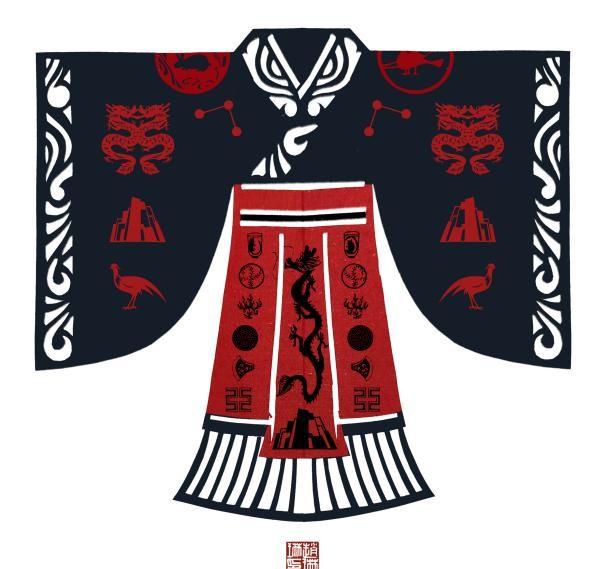The Twelve Chapters are twelve kinds of ornaments painted on the dresses of emperors and high-ranking officials, namely the sun, the moon, the stars, the mountains, the dragon, the worm, the Zong Yi, the algae, the fire, the powder rice, the mochi, the yellow, etc., commonly known as the "twelve chapters".

The twelve chapters are rich in connotations: the sun, the moon, and the stars, taking their meaning of illumination; the sun is often painted with golden wu, and the moon is often painted with toads or white rabbits, which is the general pattern of the sun and moon after the Han Dynasty.
Mountains, the pattern is the shape of the mountains, taking its meaning of stability and calmness;
Dragon, taking its divine and changing meaning;
Hua worms, beautiful flowers and insect feathers are five colors, very beautiful, taking its meaning of literary style; the earliest is divided into two chapters of flowers and birds, according to the interpretation of Kong Yingda, a scholar of the early Tang Dynasty, "The Chinese worms are called flowers and pheasants." ”。
Zong Yi, taking the meaning of offering and filial piety;
Algae, in the shape of an aquatic grass, takes its meaning of cleanliness;
Fire, taking its bright meaning;
Powder rice, take flour and rice, have the meaning of nourishment;
黼, take the meaning of cutting, decisive;
The meaning of the dragon is to discern, to discern, to turn evil to good.
The origin of the twelve chapters can be traced back to the time of Emperor Shun, which was used in later generations, and in the Zhou Dynasty, Zhou Gongdan formulated the "Zhou Li", which stipulated that the three chapters of the sun, moon and stars were painted on the flag, and only nine chapters were retained on the clothes, and the dragon was the first chapter and called "Dragon Gun". Later, Qin Shi Huangdi ascended the throne, abolished the heraldic system, and the sacrificial dress was all pure black, called "Zhen Xuan". It was not until the Eastern Han Dynasty that the Twelve Seals were restored again.
Pay attention to the art of paper-cutting at Jinyu Linguan
Start a whole new world of paper-cut creation